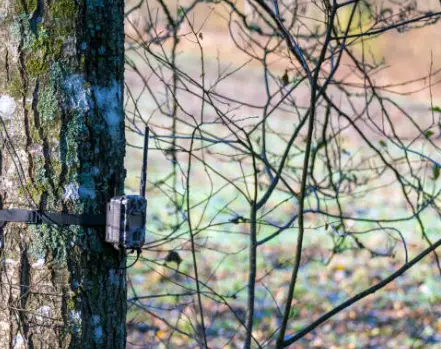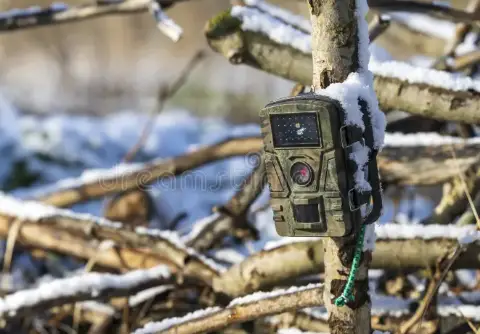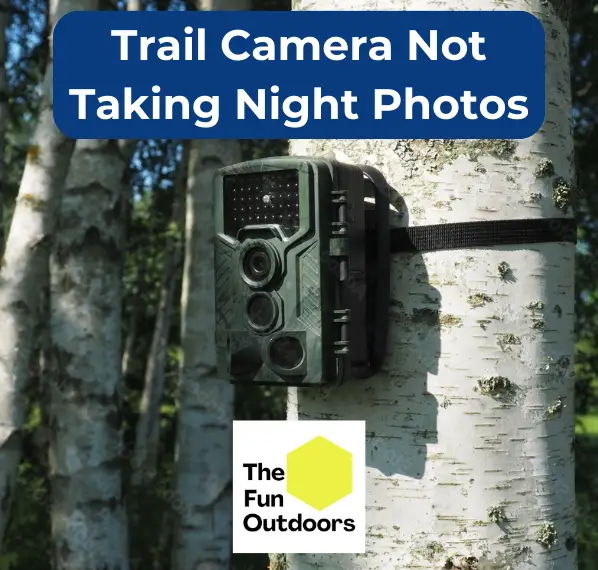Trail cameras are a popular tool for hunters and wildlife enthusiasts alike. These cameras are designed to capture photos and videos of animals in their natural habitat without human interference. However, one common issue that many trail camera users face is the camera not taking night photos. This can be frustrating, especially if the user is trying to track nocturnal animals.
The most common reasons for a trail camera not taking night photos are bad camera settings, poor placement, low flash or flash range, dead batteries, sd card issues, and weather problems.
We’ll go over how to fix all these issues and others in this guide to get you back to taking great night pictures with your game camera.
Why Your Trail Camera Isn’t Taking Night Pictures: 10 Reasons

If you’re having trouble getting your trail camera to take night pictures, don’t worry, you’re not alone. There are many reasons why your trail camera may not be taking night pictures, and in this section, we’ll cover the top X reasons.
The Detection Range Is Set Too Far
One of the most common reasons why trail cameras don’t take night pictures is that the detection range is set too far. If the camera is set to detect motion beyond its range, it won’t trigger and take a picture.
To solve this problem, adjust the detection range to match the range of your camera.
See Related: How To Program A Trail Camera
The Location and Placement Is Off
Another reason why your trail camera may not be taking night pictures is that it’s installed in the wrong location. If the camera is too close to the ground or obstructed by branches, it won’t be able to capture clear images.
Make sure your camera is placed in an open area, at least 3-4 feet off the ground, and facing the right direction.
See Related: How To Hide A Trail Camera
The Flash Light is Too Low
If the flash on your trail camera is too low, it won’t be able to illuminate the area and capture clear images.
Make sure your trail cam’s flash is set to the appropriate level for the distance you want to capture.
Also make sure your trail camera PIR delay setting is dialed in properly for optimal performance.
The Flash Range Needs To Be Adjusted
Similar to the detection range, the flash range on your trail camera needs to be adjusted to match the distance you want to capture. If the flash range is too low, you won’t be able to capture clear images at night.
Your Batteries Are Dead
Dead batteries are another common reason why trail cameras don’t take night pictures. Make sure your batteries are fresh and have enough voltage to power your camera.
Alkaline, lithium, or rechargeable batteries are all good options, but make sure you’re using the right type for your camera.
Your SD Card Is Full
If your SD card is full, your trail camera won’t be able to save any new pictures, including night pictures.
Make sure to check your SD card regularly and transfer any images to your computer or delete them to free up space.
You Need To Format Your SD Card
Formatting your SD card can also help solve issues with your trail camera not taking night pictures.
Make sure to format a SD card for trail camera use before putting it in your camera to ensure optimal performance.
The SD Card May Be Corrupted
If your SD card is corrupted, your trail camera won’t be able to save any new pictures. Try using a different SD card to see if that solves the problem.
Your Trail Camera Isn’t Rated For Your Region’s Weather
If your trail camera isn’t rated for your region’s weather conditions, it may not be able to function properly at night.
Make sure you’re using a camera that’s designed to handle the temperature and humidity levels in your area.
Your Camera Lens Is Blocked By Something
Finally, if your camera lens is blocked by something, it won’t be able to capture clear images at night.
Clean your trail cam lens regularly and remove any obstructions that may be blocking the view..
Impact of Environmental Factors

Trail cameras are designed to capture images of wildlife in their natural habitats. However, sometimes they fail to take night photos. One of the reasons for this could be the impact of environmental factors. Here are some of the factors that can affect the performance of a trail camera at night.
Effect of Weather Conditions
Weather conditions such as rain, snow, and fog can affect the performance of a trail camera. Rain and snow can cause water droplets to accumulate on the camera lens, resulting in blurred or distorted images. Fog can also cause images to appear hazy and unclear. It is important to ensure that the camera lens is clean and free from any obstructions.
Temperature Influence
Cold temperatures can also affect the performance of a trail camera. In cold temperatures, the camera’s battery life can be reduced, and the camera may not function properly. It is recommended to use lithium batteries as they are more resistant to cold temperatures than alkaline batteries.
Humidity Impact
Humidity can also have an impact on the performance of a trail camera. High humidity levels can cause condensation to form on the camera lens, resulting in blurry images. It is important to ensure that the camera is placed in a location where humidity levels are low.Take a look at our guide on how to fix a trail camera not taking pictures at all if it’s not just night photos you’re having trouble with.

